
Cover Sheet
Teacher Example
- Subject:
- Arts and Humanities
- Early Childhood Development
- Education
- Special Education
- Material Type:
- Activity/Lab
- Date Added:
- 07/06/2019

Cover Sheet
Teacher Example
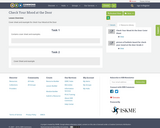
Cover sheet and example for check Your Mood at the Door
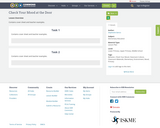
Contains cover sheet and teacher examples.
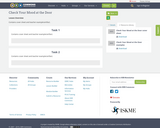
Contains cover sheet and teacher example/artifact.

These slides coverMaintaining same tense throughout writingPoint of viewMood and ToneSee also "Cohesion Part I" and "Cohesion Part III."
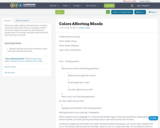
This project helps children think about the correlation colors have with moods. There are multiple activities involved to engage the students in this lesson and prompt them to create their own ideas about the effects colors may have on moods.

The 11th grade learning experience consists of 7 mostly month-long units aligned to the Common Core State Standards, with available course material for teachers and students easily accessible online. Over the course of the year there is a steady progression in text complexity levels, sophistication of writing tasks, speaking and listening activities, and increased opportunities for independent and collaborative work. Rubrics and student models accompany many writing assignments.Throughout the 11th grade year, in addition to the Common Read texts that the whole class reads together, students each select an Independent Reading book and engage with peers in group Book Talks. Students move from learning the class rituals and routines and genre features of argument writing in Unit 11.1 to learning about narrative and informational genres in Unit 11.2: The American Short Story. Teacher resources provide additional materials to support each unit.

People often say that mankind should learn from history. Charles Dickens, whose books are considered classics, set his novel A Tale of Two Cities in the past. He wanted his readers to learn from the bloody French Revolution and from the widespread brutality in London. Both cities (Paris and London) offer the reader a glimpse into dark and dangerous times. As students read about Dickens's Victorian setting and learn his view of the French Revolution, they will think about what makes a just world. Students will have a chance to think about their own experiences, and, using techniques they have learned from Charles Dickens, they will do some writing that sends a message about your own world.
ACCOMPLISHMENTS
To complete the unit accomplishments, students will:
Read the Charles Dickens novel A Tale of Two Cities.
Read several short pieces, including a biography of Dickens and excerpts from other literature, to help them understand Dickens’s world and the world of the novel.
Explore new vocabulary to build their ability to write and speak using academic language.
Practice close reading and participate in several role plays and dramatic readings to help them experience the dramatic writing style of Charles Dickens.
Write a vignette and a short narrative piece, and practice using descriptive detail and precise language.
Write a reflection about the meaning of Dickens’s novel.
GUIDING QUESTIONS
These questions are a guide to stimulate thinking, discussion, and writing on the themes and ideas in the unit. For complete and thoughtful answers and for meaningful discussions, students must use evidence based on careful reading of the texts.
How does good storytelling affect the reader, and how can a good story promote change in the world?
What was the Victorian view of gender roles?
How can power be abused?
What is loyalty ? What are the limits of loyalty?
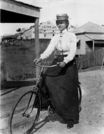
In this lesson, you will focus on filling your writing with vivid detail. You will complete a brainstorming exercise and work on your writing assignment.In this lesson, students will focus on filling their writing with vivid detail. They will complete a brainstorming exercise and work on their writing assignment.
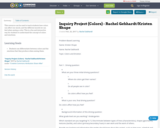
This resource can be used to teach students how colors can affect our mood, and the different moods we can feel when seeing a color. This is a fun and interactive way for students to understand the concept of colors and emotions.

This resource is a video abstract of a research paper created by Research Square on behalf of its authors. It provides a synopsis that's easy to understand, and can be used to introduce the topics it covers to students, researchers, and the general public. The video's transcript is also provided in full, with a portion provided below for preview:
"Maintaining mental health during future deep-space exploration is a serious and complicated problem. Such exploration will require people to remain in closed environments for incredibly long periods. But connections between our gut microbes, the gut itself, and our brain could hold new solutions. Research has suggested that influences can travel along this microbiota-gut-brain axis. So, to identify potential mood-boosting microbes in an enclosed environment, researchers turned to the Lunar Palace 365 experiment, where the Lunar Palace 1, a closed bioregenerative life support facility, housed people for a year. The researchers identified four potential “psychobiotics” that corresponded with mental well-being, as well as three possible mechanisms for the improved mood. First, these microbes may be fermenting dietary fibers to produce short-chain fatty acids. Second, they may regulate amino acid metabolism pathways, including the one that converts tryptophan to serotonin..."
The rest of the transcript, along with a link to the research itself, is available on the resource itself.